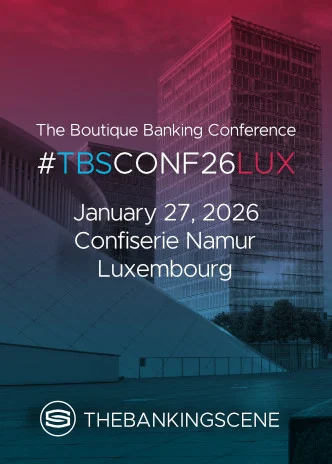
Insights & Opinions
Meet Digital Assistant Kate – When Digital Transformation Gets Personal
Tue, 24 Nov 2020

Today, November 24th is a big day for KBC. They launched Kate, a virtual assistant, to assist its customers anywhere, anytime. Johan Thijs, CEO of KBC, explained a few weeks ago that Kate will not just be a chatbot: “Ultimately, all product and process development and updates will be driven by Kate. Interaction between the branches, KBC Live (our remote contact centre) and Kate will be maximised to boost the pickup rate of Kate-driven solutions.”
At our Afterwork session last week, we invited Karin Van Hoecke, General Manager (Digital) Transformation and Data of KBC Bank Belgium, to discuss their digital transformation. She helped us understand what Kate’s role is in the entire strategy and services offering on KBC.
Customer and digital experience at the heart of KBC’s strategy
It is no coincidence that KBC ranks high in every benchmark of innovation and digital experience in the banking industry, whether that is local, European and even global. The bank has a consistent history to grasp technological possibilities and more importantly: to turn them into a valuable customer experience.
What started as a set of more than 15 apps in the past, evolved to one rich core app, KBC Mobile, with proprietary and third-party solutions to help their customers with financial and non-financial services.
Karin: “We have a more integrated approach today, and our customers appreciate this. Combining everything in one environment is simply more convenient than using the best possible fintech solution for every individual financial service.”
To better assist customers in finding their way in the one-app-fits-all approach, KBC reimagined its customer experience of the future.
Kate, so much more than a chatbot
9 months ago, KBC decided to invest in a new, ground-breaking project. Realising today’s technology possibilities to better assist and support their customers in their day-to-day life, they developed Kate, a digital assistant, for both chat and voice assistance.
“Kate is more than a chatbot. You can say that it is the brain of a baby today, but the idea is that she becomes a beautiful young lady”, said Karin. The vision of the bank is that one day, they can avoid customers to ask questions, while instead, they anticipate the customer’s needs based on all the data available.

Kate went live with 14 cases for Belgium, 7 for the Czech market, with updates and new cases every week. More countries will follow in 2021.
As from today, November 24th, customers will be assisted by Kate, in chat or through voice. If Kate cannot help, then the customer will be redirected to KBC Live, who will get the customer in touch with human advisors.
The questions or instructions for Kate (You2Kate) range from making a money transfer and search transactions to showing insurance documents. A significant difference with traditional chatbots is that Kate can get in touch with you (Kate2You). Based on weather conditions, she can ask if there was any damage to the house, she can suggest to down-sell your car insurance if relevant, or make you switch energy provider. These are all proactive ways to make the life of a customer more comfortable or cheaper. Kate takes the next step of KBC to the ultimate laziness.
My favourite example that Karin explained was the one where KBC witnesses that one of their customers with car insurance has an 18-year-old son, and they made a payment for driving lessons. Kate will proactively suggest the customer to update the insurance policy by adding the son in the insurance. Signing the contract is easy as a tap of a finger or the blink of an eye with KBC Mobile. In real-time, the policy is updated, and the changes are immediately visible online.
When Kate detects that you did a simulation for a mortgage loan, she will get in touch with you to see if you need any assistance. If you don’t answer, the CRM system will detect it and instruct an advisor to get in touch.
The systems are self-learning, so with every new day of work, Kate gets smarter and more empathic.
The challenges of rolling out autonomous finance
Chris Skinner interviewed Namer ALjazrawi, global head of Strategy & Operations, for FS at Salesforce last week about autonomous finance. Namer defined autonomous finance as: “finance that uses artificial intelligence (AI) and automation to deliver personalised optimised experiences specific to the financial services industry. It requires a shift in how organisations approach operations and will require them to digitise what was once analogue and on paper.”
That is precisely what Kate is. It is a complete paradigm shift on how to manage a trusted organisation like a bank. Karin detected four fundamental challenges in the migration to (more) autonomous finance.
The first one being the required time and data to train the engines. Karin: “Training a machine is hard and takes time. All machines start stupid. The first question to ask is: is there relevant data? Luckily, as a bank, we have a lot of historical data to feed to the machine for learning.”
For every self-learning process, machines will do the job in parallel with employees. These two realities allow Model Owners, a new role that KBC created for their AI initiatives, to evaluate the machine and to adapt model where needed without any risk for the customer.
The second is to convince the regulator. We all know that banks are heavily regulated organisations. Everything that gets automated needs to be explainable, transparent and documented. Once the machine is minimum as reliable as a human being, it can be activated in a production environment: it needs to be trusted!
The third challenge is to create support and buy-in from the employees. These people have many years of experience of how to sell products and services and how to manage them. Now a computer takes over or starts to assist them, which created resistance. A good understanding that the machine augments the value that employees create for their customers will grow trust that employees have in Kate. That will quickly make them ambassadors from the beginning.
The fourth challenge is the customer and how to make them trust Kate. Once they understand what is in it for them, they will more easily adopt the new service. That is also why some of the first 14 use cases are promoting a down-sell of products and services. It demonstrates that Kate assists them, instead of purely thinking in the interest of the bank’s short-term results.
The communication needs to feel natural as well. Karin explains: “We have experts now that make sure that how the machine interacts and how human interact fits well. The better these experts do their job, the more natural the conversation gets and the fewer humans you need in the conversational process, resulting in more satisfaction by the customer.”
The accent of Kate is another essential factor in that respect. Today, the voice in Flanders will still be with a Dutch accent, but based on the calls she has with Flemish customers int the coming days, months and years, this will change over time.
The importance of human interaction in the future of banking
Mind you: the development of Kate is still part of a ‘digital-first’ strategy, not a step to ‘digital-only’. Transactional services will increasingly more be phased out from the branch network, but Karin explains that “it is different for advisory services. Although you can apply for a mortgage loan online, chances are that even young people like to talk to an expert to make a choice with confidence.”
Many services today are not fit for automation yet. Karin: “I am convinced that KBC Live will keep growing in the coming years. Kate is still a baby, she will grow to become a young lady, and as she grows up, I am convinced that this will have an impact on the volumes in KBC Live.
Again, this does not mean we will no longer need people. As new possibilities and trends arise, people may be getting another role, but they remain crucial for our organisation.”
The big challenge today is availability. With COVID-19, people got used to digital services, whether that is digital communication with an advisor or do-it-yourself transaction services. This is likely to be a permanent trend. People will remain essential in all this.
In terms of availability, technology can be an enabler to better allocate resources to overcome the issue of people that have to wait to be serviced. As Klaas Ariaans, of ABN AMRO already explained before: by allowing the advisors to interact through digital channels, you create a bigger talent pool of advisers than can help customers at any time. Technology will provide the communication channels and resource allocation. The more complex advise remains the responsibility of human specialists.
Conclusion
KBC made a big bet on futureproofing its business. It is a logical next step to a better customer experience. Complex advisory services and customer conversations used to be a branch business. Later came contact centres, internet banking and more static mobile banking. Today, KBC Live helps customers from a distance.
Kate will help KBC to spend more time to find the best possible service for every client. But Karin remains humble for the future: “It is always difficult and risky to say you are well-prepared.” However, with Kate, they created a highly personal, locally relevant value proposition that will be hard to copy by international players that wish to enter the market.



